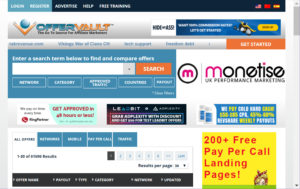
Affiliate advertising provides you revenue. You put affiliate ads in your content, and the advertisers pay you. The payment terms vary, but many affiliate ads can be very lucrative.
Picking affiliate advertisers is something that requires careful considerations. You want to pick advertisers that will appeal to your webbook readers. If they don’t click on ads, you don’t get paid. Beyond that, however, you don’t want to alienate your readers by putting in front of them ads in which they have no interest whatsoever. In other words, the ads must relevant to your content; it’s the content that attracts the readers to your webbook.
Another consideration is how much does the affiliate advertiser pay you and for what? Three ways that affiliate advertiser might pay you:
- A click on the affiliate add link. This usually pays the least, because there’s no guarantee to the affiliate advertiser that the click through will amount to any action by the user (reader).
- A click on the affiliate ad and the user takes some action thereafter. The action might be to fill out an application or questionnaire. It might be simply for the user to add their address to the affiliate advertiser’s emailing list.
- Some advertisers seek a click followed by a purchase. In other words, you don’t get paid unless the user purchases something from the affiliate advertiser.
Payment is typically a fixed amount of cash contributed to your account. In the case of a sale, however, it might be a percentage of the sales price. Whatever the arrangement, you do not get paid until a reader clicks on the affiliate add in most cases not get paid until the reader take some action thereafter.
The name of the game is to get paid as much as possible for the affiliate ads that you include in your webbook. Thus, in choosing your affiliate advertiser’s you always consider the amount to be paid. In addition, you must consider the likelihood that one of your readers will take the action which satisfies an affiliate advertiser’s requirement.
What are some of the pitfalls. First, choosing the affiliate advertisers that pay the most is likely not the best policy. The advertising must be relevant as well as pay well. It’s quite possible that you will include affiliate ads that pay very little, but you consider them to be of great value to your users.
Second, you will want to test out any affiliate ad you include in your webbook. You can’t test it yourself, because affiliate advertisers do not permit you to click on the ads in your webbook for obvious reasons. Nonetheless, you can use someone else’s computer to test the affiliate ads. You want to make sure that an affiliate ad is not something that will be offensive to your users. In addition, you want make sure that the affiliate ads are not some kind of scam that exposes users to fraud.
So where in the world will you find affiliate advertisers? You cannot go to individual advertisers to negotiate some kind of a advertising arrangement. It would take far too much time and energy on both your part and the part of the affiliate advertiser. Consequently, affiliate advertising organizations have materialized on the web that facilitate advertising arrangements. I don’t know what to call these organizations, but you might refer to them as advertising brokers or advertising catalogs. The name that seems to be catching on is affiliate networks.
You simply join such a network as a publisher. Some affiliate networks will allow anybody to join. Others are very picky about who they allow to participate. In any case, the catalog is just a list of affiliate advertisers who want to advertise on websites. Each advertiser has their own particular requirements and payment arrangement. In addition, the catalog provides the HTML code for the link to each advertiser’s ad.
Your job is just to go into the affiliate advertising catalog and pick and choose the advertisers that you want to include in your webpages. Once you pick and choose, it’s just a matter of copying and pasting the affiliate advertiser’s link into a webpage. As you will see in Chapter 28, there might be more to it than just that, but the process is simple and straightforward.
If you look at it from the affiliate advertisers point of view, it’s an efficient way for advertisers to spread their advertising around while avoiding having to negotiate each particular advertising arrangement. Thus, the affiliate advertising catalog becomes the place where you go to make advertising arrangements with the advertisers.
Summary
Join an affiliate advertising network (to access the catalog) and pick advertising that is both relevant to your readers and pays well. Then use the provided links (code) to place the advertising in your webbook. Read chapter 28 for more information on exactly how to handle affiliate advertising links in your webpages.